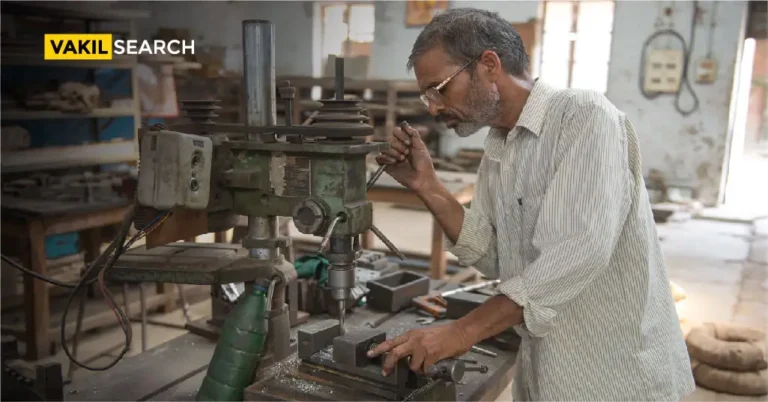If you want to complete a mutual divorce in a legal way, an MoU can be highly important to be aware of. Here are the tips for writing the mutual divorce agreement and an overview of the MoU. With this article, learn more about the importance of MoU in mutual divorce.
MOU in Mutual Divorce: Divorce through consent or mutual consent, also known as Mutual Divorce, is when both spouses and husbands accept that they cannot live in a relationship any longer and that the best option is divorce. They present a mutual divorce petition jointly before the court without making accusations against one another.
Tips on How to Draft an Agreement for a Plain Mutual Divorce
- If the spouse and husband have a marital conflict and have decided to get an agreement for a plain and simple mutual divorce, the initial step would be to create an agreement for mutual divorce. A Mutual Divorce Agreement is an initial and most important document through which the process of a mutual divorce between spouses begins
- It is important to note that Mutual divorce agreements in India are legally binding and affect the law. So it is important to draft it, keeping all relevant factors in mind
- The draft of the agreement for mutual divorce in India is based on the specific circumstances of the particular situation, the areas of disagreement among the disputants, and various other related issues.
The Most Important Things That You Should Include in Your Agreement for Divorce Mutually
- Issues concerning alimony between parties
- The child’s status, such as fees for education, visitation rights, wedding etc.
- Bifurcation of properties held by the mutually owned, in case there are any
- Correction and confirmation of any record concerning the state of marriage, nominating, etc.
- The withdrawal and quashing of the FIRs or any complaints among the disputants, usually by the spouse against the husband’s family members
- Other relevant and related issues affect the parties in light of the circumstances and facts of the particular case.
How to Apply for a Mutual Consent Divorce
There are several steps to getting a legal divorce with mutual consent. The mutual divorce process in India typically begins with the petition submission, as is provided under Chapter 13B in the Hindu Marriage Act. There are some compulsory actions in this process. Here are the key steps:
1. Making a Joint Petition
The first step is the submission of the joint petition in the family court. Each of the parties must sign the joint petition. The divorce petition includes an agreement between the parties who state that they should no longer live together due to their inseparable differences and should be granted the divorce. This document also includes the arrangement to divide assets, custody of children, etc.
2. Scrutiny of Petition of Court
The court will then review the petition and all the documents submitted by the respective parties. Once the parties satisfy the court, it requires recording the parties’ statements under oath. In some instances, the court tries to find a way to reconcile the parties. The divorce case is decided upon if there is no effort to bring the parties into harmony.
3. The Appearance of Both Parties in Court
The next step in the process is to have the appearance of both divorce parties in the family court following the petition. The court sets this date, and the parties show up together with their lawyers.
4. Recording of the Statement and the Passing of the First Motion
After the two parties’ declarations have been recorded under oath, an order on the first motion is issued in court. After that, 6 months are set for the parties. Thus, the parties must make a second motion. The second motion must be filed within 18 months following the initial motion’s submission date.
5. Decision From the Court
The primary condition for the grant of divorce through mutual consent is a free agreement between the parties. Also, it is impossible to grant a divorce unless there exists an absolute agreement between the spouse and husband for the dissolution of the marriage.
Until the parties satisfy the court, it will not be able to issue divorce decrees with mutual consent. Based on the declarations recorded by the parties and on the specific details and circumstances of the case, the court makes the proper instructions for dissolving the marriage. The court then approves the divorce decree, and the divorce is now final.
6. Appearing for the Second Motion
After six months from the initial motion or after the reconciliation time, if both parties cannot accept a reconciliation. Also, the parties can be present for the second motion to hear one final court hearing. This will also require the parties to appear and make statements in front of the court.
In a recent ruling, the Supreme Court has categorically stated that the six-month period is not mandatory and the parties can waive it at the judge’s decision. The court cannot issue the divorce decree if the parties don’t file the second request within 18 months. Furthermore, as per the provisions of the statute and the established legal system, it’s obvious that either party can decide to withdraw their consent anytime before the date of the decree.
Important Information on the Writing of Agreements:
- A Mutual Divorce Agreement also needs all the details of both parties property. It includes their movable and immovable properties, their precise identity number, value, and so on
- The Mutual Divorce Agreement must include the date and place where the couple married, the place where the parties will reside during their marriage, and the time for their stay
- The draft of the joint divorce contract must clearly mention the legal proceedings that have been instituted or are unresolved between the parties, along with full information about the FIR numbers, cases, etc
- The agreement to mutually divorce in India must include all details, including the address, name and age of both parties, along with pictures
- It must include details of the children, in case there are any of them or the date of their birth
- The agreement must mention the date from which the parties can live separately and their addresses/locations during a mutual divorce
- It should be clear that the whole disagreement between both parties will be addressed under the agreement and that no claims, whether either past or future, are due in any way that isn’t covered by the mutual divorce agreement in India.
- You must include the method for the distribution of properties and the procedure to transfer the title to the parcel if there is a need for it in the case of divorce by mutual consent
- The Mutual Divorce Agreement must clearly display the declaration of all disputes, proceedings and other issues. Are settled as per the agreement. No claim or counterclaim remains between the parties. Any future claim will be deemed unenforceable if filed after the agreement has been signed. Both parties should be free to conclude any proceedings by filing an agreement between them
- The agreement must clearly state the memorandum of understanding child custody rights
Click here to know about: MOU Agreement
Conclusion – MOU in Mutual Divorce
When both husbands and wives agree that they cannot continue to be in a relationship and that divorce is the best course of action, this is referred to as a divorce via consent or informed agreement, also known as a mutual divorce. Without laying blame on one another, they jointly file a petition for Mutual Divorce with the court: https://districts.ecourts.gov.in/
Read More:










